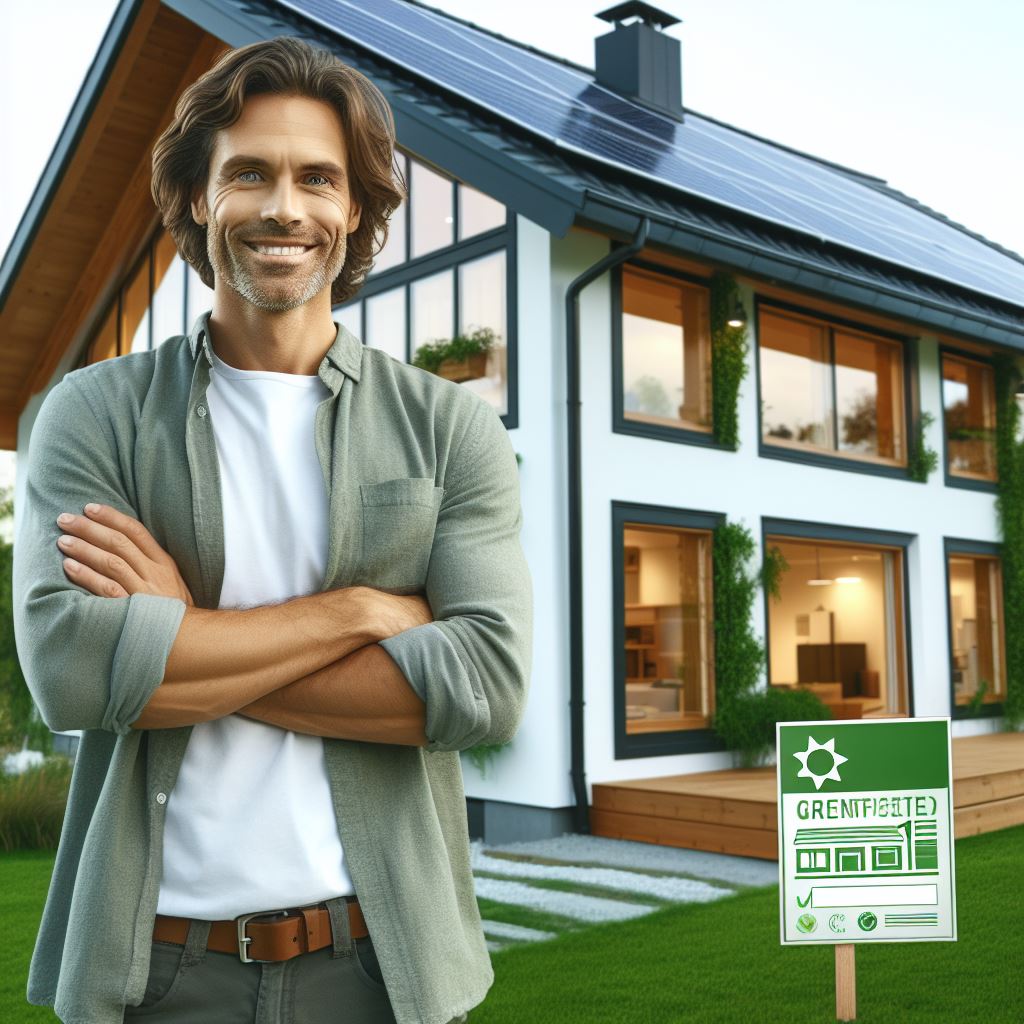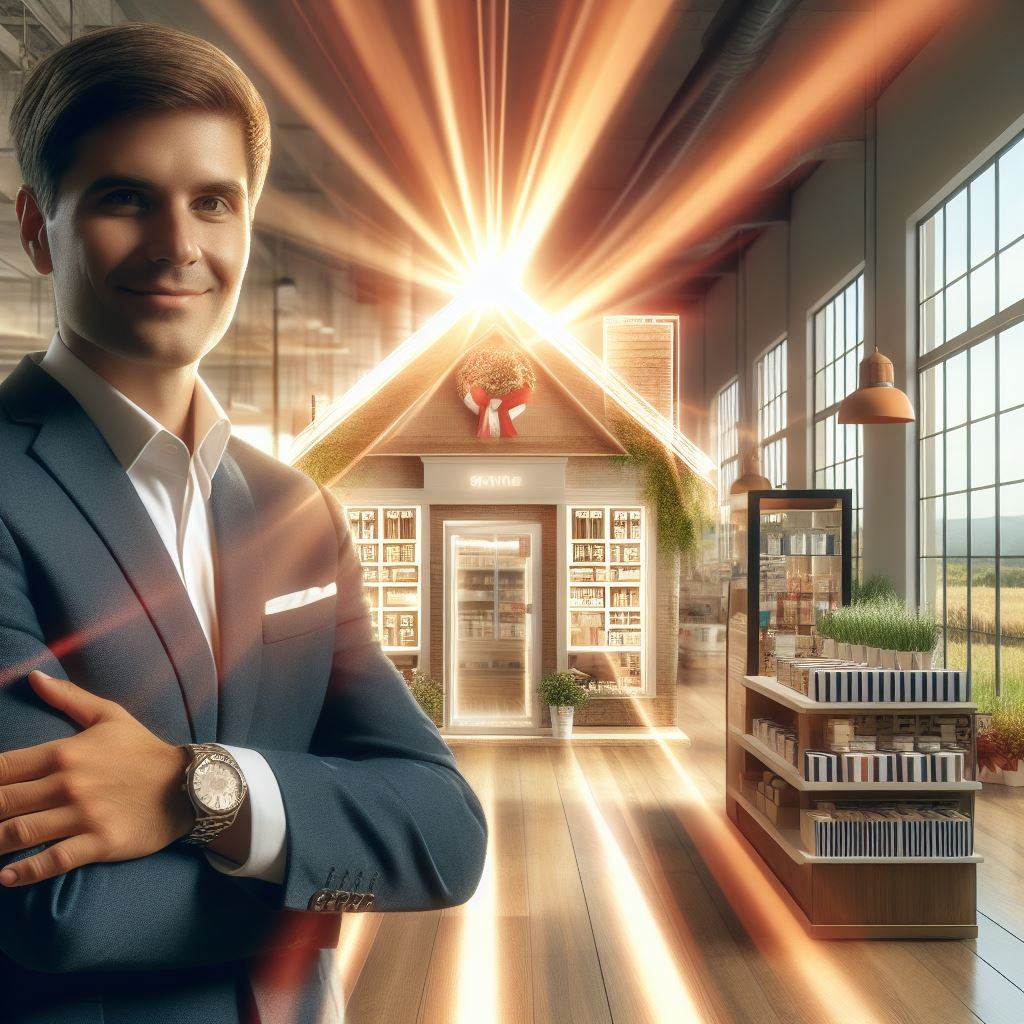Introduction
Green buildings are environmentally friendly structures that are designed to have a minimal impact on the environment.
They use energy-efficient materials and systems to reduce energy consumption and lower greenhouse gas emissions.
Green buildings are crucial in the US real estate market as they contribute to sustainability and reduce operating costs for owners and tenants.
This blog post aims to discuss the market trends of green buildings in the US until 2024.
By analyzing current data and projections, we will explore the growth of green buildings, advancements in technology, and the impact of regulations on the market.
Additionally, we will examine the benefits of green buildings, such as improved indoor air quality and increased occupant productivity.
Understanding these trends will provide valuable insights for investors, developers, and policymakers in the real estate industry.
So, let’s dive into the fascinating world of green buildings and explore their future in the US market.
Overview of Green Building Concepts
A. Definition of green buildings
Green buildings are structures designed to be environmentally friendly and sustainable.
They use resources efficiently and promote health and well-being for occupants.
These buildings are constructed using eco-friendly materials and incorporate energy-efficient systems.
They aim to reduce negative impacts on the environment throughout their entire life cycle.
B. Key principles and features of green buildings
- Energy efficiency: Green buildings optimize energy usage through efficient insulation and lighting systems.
- Water conservation: They promote water efficiency by using low-flow fixtures and harvesting rainwater.
- Waste reduction: Green buildings minimize waste generation through recycling and composting practices.
- Sustainable materials: They prioritize the use of renewable and non-toxic materials in construction and furnishings.
- Indoor air quality: Green buildings enhance indoor air quality through proper ventilation and pollutant control.
- Site selection: They give preference to locations that minimize ecological disturbance and promote public transportation.
C. Benefits of green buildings for both the environment and occupants
1. Environmental benefits
- Reduced carbon emissions and greenhouse gases help combat climate change.
- Conservation of water resources through efficient usage and recycling.
- Preservation of natural habitats and biodiversity by minimizing land and ecosystem disruption.
- Promotion of sustainable waste management practices to reduce landfill usage and pollution.
2. Occupant benefits
- Improved indoor air quality promotes better health and reduces respiratory issues.
- Enhanced thermal comfort through proper insulation and climate control systems.
- Access to natural light and views improves productivity and well-being.
- Use of eco-friendly materials creates a safer and healthier living or working environment.
- Increased occupant satisfaction due to the overall improvement in comfort and well-being
Green buildings play a crucial role in addressing environmental concerns while providing numerous benefits to occupants.
Read: Tech Impact on US Commercial Real Estate
Current State of the US Green Building Market
A. Statistics on the growth of green buildings in recent years
The green building market in the US has experienced significant growth over the past decade.
In 2019, the green building sector accounted for 38% of all new construction projects in the country.
From 2014 to 2019, the green building market grew at a compound annual growth rate (CAGR) of 11%.
LEED (Leadership in Energy and Environmental Design) certification has been an important driver of the green building industry.
By 2024, the market value of green buildings in the US is projected to reach $372 billion.
B. Role of government regulations and incentives in promoting green buildings
The US government has implemented various regulations and incentives to encourage the adoption of green building practices.
The Energy Policy Act of 2005 introduced tax incentives for energy-efficient buildings.
The Green Building Initiative provides grants and technical assistance to promote sustainable building practices.
Government-backed programs like ENERGY STAR and the Department of Energy’s Zero Energy Ready Home program have incentivized green building.
These regulations and incentives have played a crucial role in driving the growth of green buildings in the US.
C. Major US cities leading green building initiatives
San Francisco, California, is one of the leading cities in promoting green buildings.
The city has implemented strict building codes and regulations to ensure energy efficiency and sustainable design.
Seattle, Washington, is known for its commitment to green building practices, with a strong focus on LEED certification.
New York City has set a goal to reduce greenhouse gas emissions from buildings by 80% by 2050, driving the adoption of green building practices.
Chicago, Illinois, has made significant efforts to promote green building through initiatives like the Chicago Energy Benchmarking Ordinance.
D. Market share of green buildings in different sectors (residential, commercial, etc.)
The residential sector has seen a significant increase in the adoption of green building practices.
Energy-efficient homes are in high demand, driven by cost savings and environmental concerns.
In the commercial sector, green buildings represent a growing market segment.
Many companies are embracing sustainability as part of their corporate social responsibility efforts.
Government buildings and institutions have also been early adopters of green building practices.
In short, the US green building market has witnessed substantial growth in recent years, driven by government regulations, incentives, and the efforts of major cities.
The statistics show a promising future for the green building industry, with significant market share in various sectors.
The continued focus on sustainability and energy efficiency is expected to drive further growth in the coming years.
Read: US Warehouse Market: 2024 Growth Insights
Emerging Trends in the US Green Building Market
A. Integration of renewable energy systems in green building design
Green buildings are now incorporating renewable energy systems such as solar panels and wind turbines.
These systems help to reduce reliance on traditional energy sources and decrease carbon emissions.
The integration of renewable energy systems adds to the overall sustainability and efficiency of green buildings.
B. Preference for sustainable and locally sourced materials
The use of sustainable materials, such as bamboo or reclaimed wood, is becoming more popular in green building design.
Locally sourced materials are also preferred as they reduce transportation emissions and support the local economy.
By using sustainable and locally sourced materials, green buildings can further reduce their environmental footprint.
C. Incorporation of smart technology for energy efficiency and monitoring
Smart technology, such as automated lighting and HVAC systems, is being integrated into green building designs.
These systems optimize energy usage by adjusting settings based on occupancy, time of day, and weather conditions.
Real-time monitoring allows building managers to identify energy inefficiencies and make data-driven improvements.
D. Focus on water conservation and efficient plumbing systems
Green buildings are placing a strong emphasis on water conservation to reduce strain on local water resources.
Green building designs are incorporating efficient plumbing systems, such as low-flow fixtures and rainwater harvesting.
By minimizing water consumption and implementing efficient systems, green buildings contribute to sustainable water management.
E. Adoption of green building certifications and rating systems
Green building certifications, such as LEED (Leadership in Energy and Environmental Design), are gaining traction in the US market.
These certifications provide a recognized standard for evaluating the sustainability and performance of green buildings.
Building owners and developers are increasingly seeking certification to showcase their commitment to sustainability and attract conscientious tenants.
In general, the US green building market is witnessing the emergence of several key trends.
These include the integration of renewable energy systems, preference for sustainable materials, incorporation of smart technology, focus on water conservation, and adoption of green building certifications.
These trends highlight the industry’s commitment to promoting sustainability, reducing environmental impacts, and creating healthier and more energy-efficient buildings.
Read: Future of Office Real Estate in the US

Market Projections for Green Buildings in the US until 2024
A. Analysis of factors driving the growth of green buildings
Increasing awareness about environmental sustainability and the need for reducing carbon emissions.
Government initiatives and regulations promoting energy-efficient and eco-friendly construction practices.
Rising demand for energy-efficient buildings to reduce operational costs and improve resource utilization.
Growing preference among consumers for healthier and more comfortable living and working environments.
B. Forecasted market size and potential growth rates
By 2024, experts anticipate the US green building market reaching $175 billion. From 2019 to 2024, the market is projected to grow at a CAGR of 11%.
Factors such as increased investments in green infrastructure and a shift towards sustainable construction will drive this growth.
Rising adoption of green building standards like LEED and ENERGY STAR will further contribute to market expansion.
C. Projections for market share of green buildings in different sectors
- Residential sector: Green buildings are expected to account for around 20% of new residential construction by 2024.
- Commercial sector: Green buildings are projected to represent approximately 45% of new commercial construction by 2024.
- Industrial sector: The market share of green buildings in the industrial sector is estimated to reach 35% by 2024.
- Institutional sector: Green buildings are expected to capture around 30% of new institutional construction by 2024.
D. Potential challenges and opportunities in the green building market
1. Challenges
- High initial costs associated with green building technologies and materials.
- Lack of awareness and knowledge among stakeholders about the benefits of green buildings.
- Limited availability and higher costs of skilled labor and professionals in green construction.
2. Opportunities
- Integration of green building practices into existing buildings through retrofitting and renovations.
- Advancements in technology, such as smart building systems and energy-efficient appliances.
- Collaboration between public and private sectors to develop sustainable building codes and standards.
In a nutshell, the market projections for green buildings in the US until 2024 are promising.
Factors driving growth include increased awareness, government support, cost savings, and improved occupant well-being.
Forecasters predict the market will reach $175 billion, showing substantial growth in residential, commercial, industrial, and institutional sectors.
However, challenges such as high costs and limited awareness need to be addressed, while opportunities such as retrofitting and technological advancements should be capitalized upon for sustainable and efficient building practices.
Read: 2024 US Retail Spaces: Trends & Forecasts
Conclusion
A. Recap of the key points discussed in the blog post
Throughout this blog post, we explored the US market trends for green buildings and identified some crucial points.
We learned that green buildings are becoming increasingly popular due to their numerous environmental and economic benefits.
Significant growth in the demand for green buildings is expected due to factors like energy efficiency, sustainability, and cost savings.
We also discussed the various technologies and practices that contribute to the development of green buildings.
B. Importance of keeping up with green building trends for real estate professionals and investors
For real estate professionals and investors, it is crucial to stay updated with the latest trends in green buildings.
As the market continues to shift towards sustainable and eco-friendly practices, being knowledgeable and well-informed about green building trends can provide a competitive edge.
Investing in green buildings not only aligns with the growing demands of environmentally-conscious customers but also offers financial benefits through energy savings, reduced operational costs, and increased property value.
C. Encouragement to stay informed about future updates and developments in the US green building market
Staying informed about future updates and developments in the US green building market is of utmost importance.
This rapidly evolving industry presents new opportunities, technologies, and regulations that can shape the real estate landscape.
By keeping a close eye on green building trends, real estate professionals and investors can adapt to changing market demands, identify lucrative investment opportunities, and contribute to a sustainable future for both the environment and their businesses.




